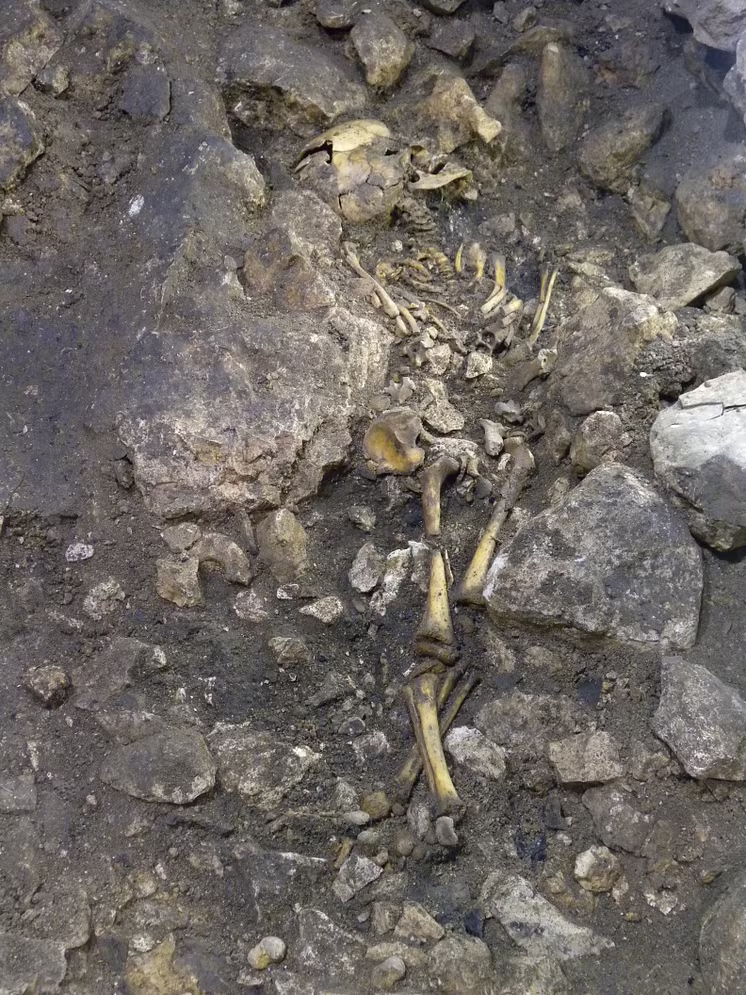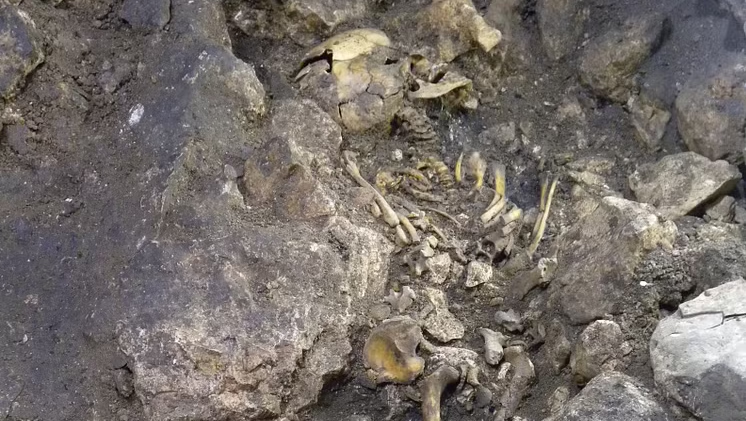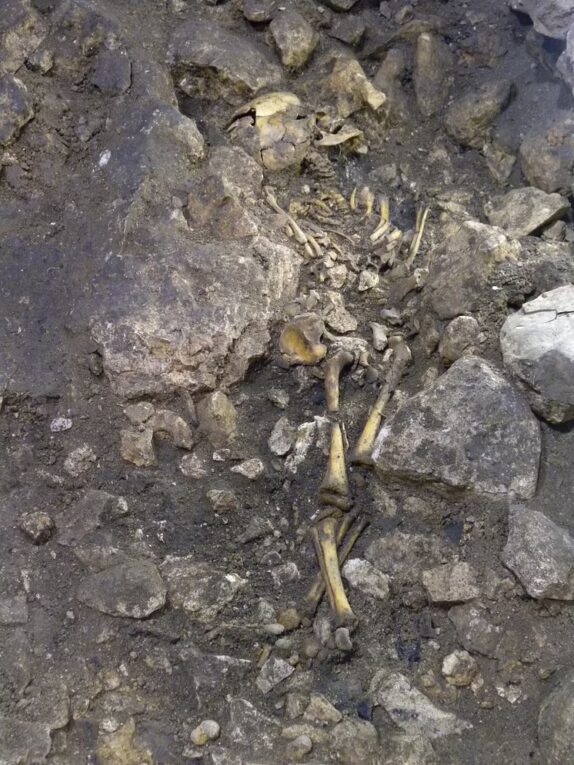The research described in the article by Günther et al. (2015) in PNAS reveals that early Iberian farmers are the closest ancestors to modern-day Basques, in contrast to previous hypotheses.

The unusual cave burial of the 6-year-old boy “Matojo” (ATP12-1420) from the Copper Age. The burial was found deliberately sheltered by large limestone blocks and three other blocks carefully protected the child´s head. The grave was scattered with grave goods suggesting a special status of this boy. The burial is covered by different ornaments, such as ceramics fragments of different sizes sealed with a green-like clay, vessel parts, flint flakes, a bone arrowhead, quartzite and, most surprisingly, the boy was left accompanied by an almost complete calf in anatomical position. This child possibly died of malnutrition as evidenced by a series of lesions in his skull and bones indicating the boy suffered from rickets and/or scurvy (Castilla et al, 2014) at different stages of his life. Credit: Eneko Iriarte
Significance
The transition from a foraging subsistence strategy to a sedentary farming society is arguably the greatest innovation in human history. Some modern-day groups—specifically the Basques—have been argued to be a remnant population that connect back to the Paleolithic. We present, to our knowledge, the first genome-wide sequence data from eight individuals associated with archaeological remains from farming cultures in the El Portalón cave (Atapuerca, Spain). These individuals emerged from the same group of people as other Early European farmers, and they mixed with local hunter–gatherers on their way to Iberia. The El Portalón individuals showed the greatest genetic affinity to Basques, which suggests that Basques and their language may be linked with the spread of agriculture across Europe.
Abstract
The consequences of the Neolithic transition in Europe—one of the most important cultural changes in human prehistory—is a subject of great interest. However, its effect on prehistoric and modern-day people in Iberia, the westernmost frontier of the European continent, remains unresolved. We present, to our knowledge, the first genome-wide sequence data from eight human remains, dated to between 5,500 and 3,500 years before present, excavated in the El Portalón cave at Sierra de Atapuerca, Spain. We show that these individuals emerged from the same ancestral gene pool as early farmers in other parts of Europe, suggesting that migration was the dominant mode of transferring farming practices throughout western Eurasia. In contrast to central and northern early European farmers, the Chalcolithic El Portalón individuals additionally mixed with local southwestern hunter–gatherers. The proportion of hunter–gatherer-related admixture into early farmers also increased over the course of two millennia. The Chalcolithic El Portalón individuals showed greatest genetic affinity to modern-day Basques, who have long been considered linguistic and genetic isolates linked to the Mesolithic whereas all other European early farmers show greater genetic similarity to modern-day Sardinians. These genetic links suggest that Basques and their language may be linked with the spread of agriculture during the Neolithic. Furthermore, all modern-day Iberian groups except the Basques display distinct admixture with Caucasus/Central Asian and North African groups, possibly related to historical migration events. The El Portalón genomes uncover important pieces of the demographic history of Iberia and Europe and reveal how prehistoric groups relate to modern-day people.
Related content


